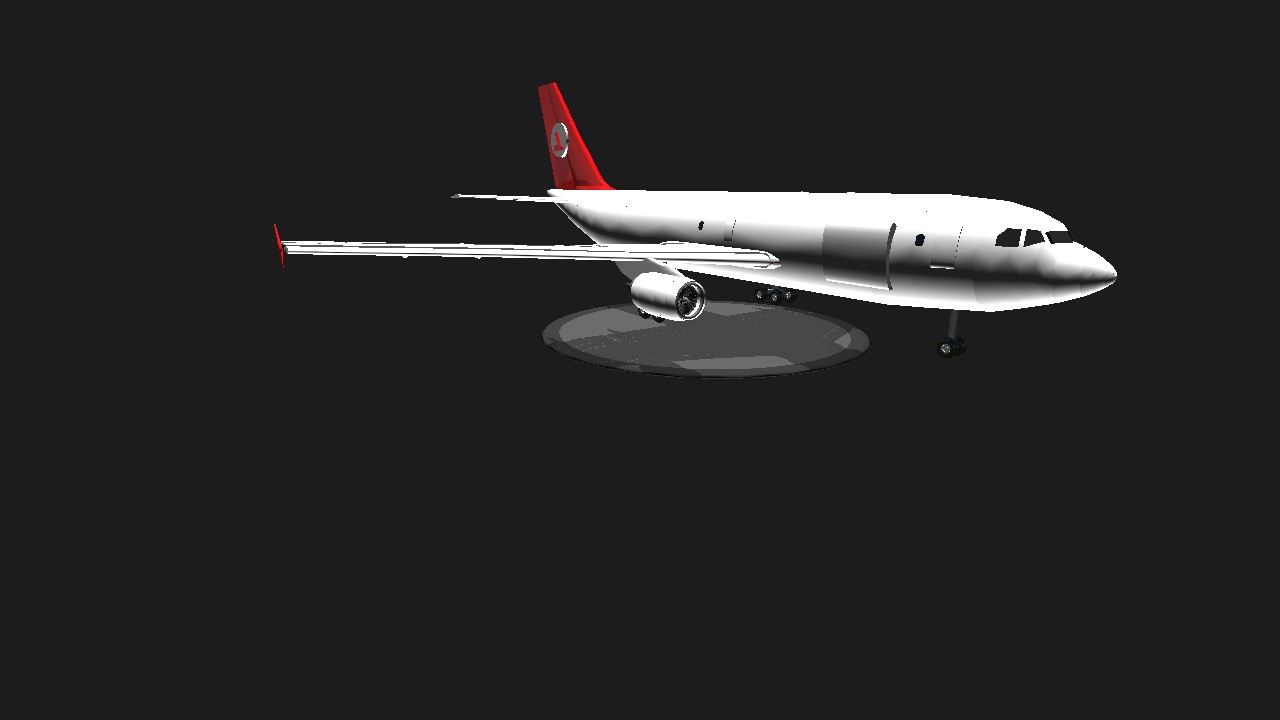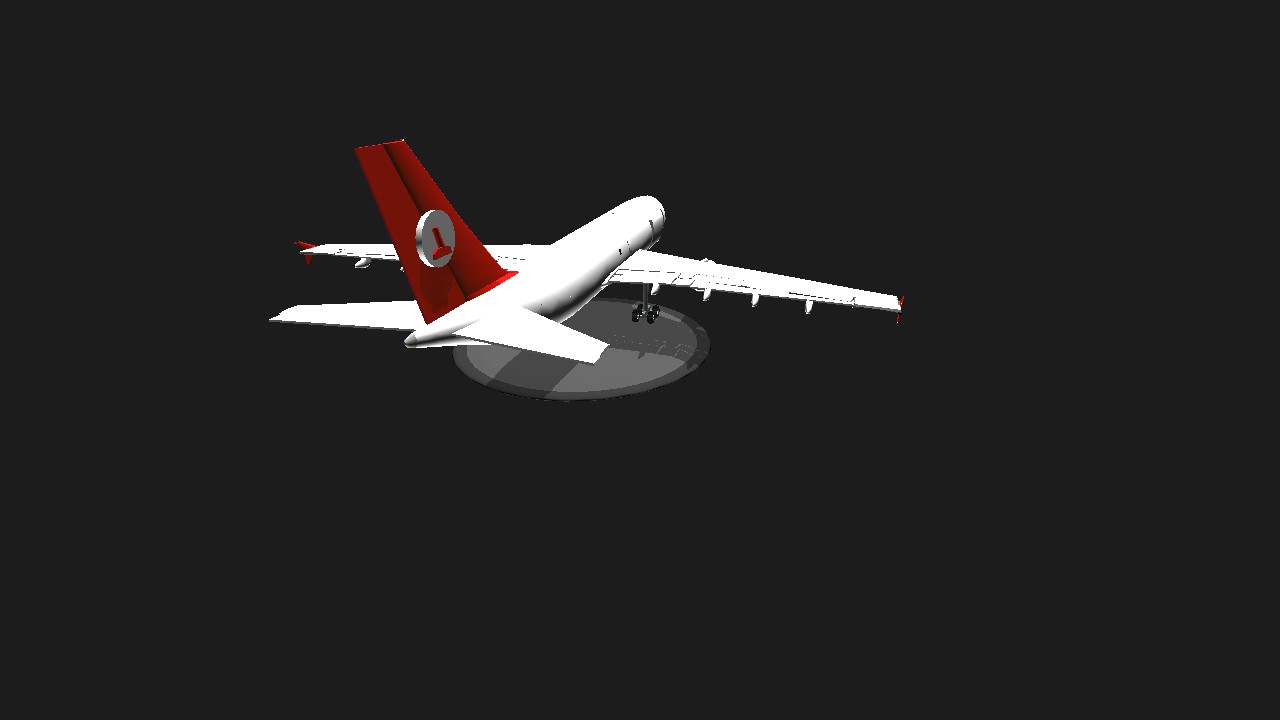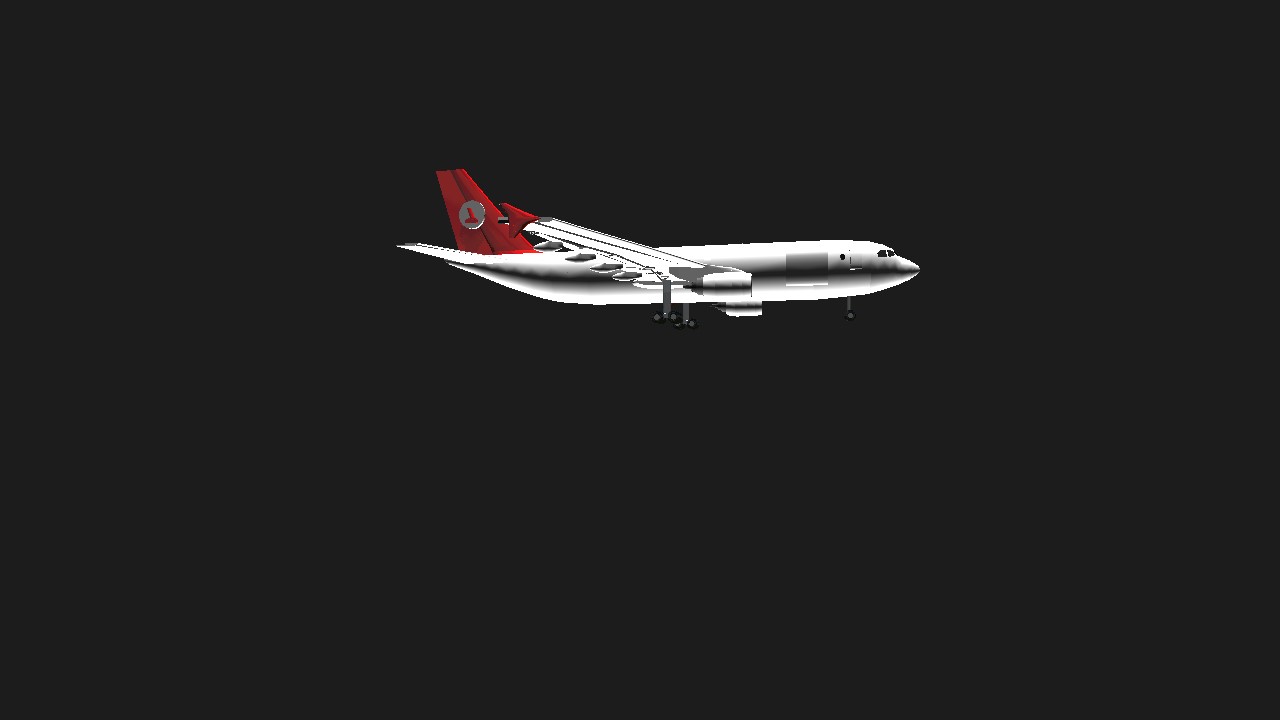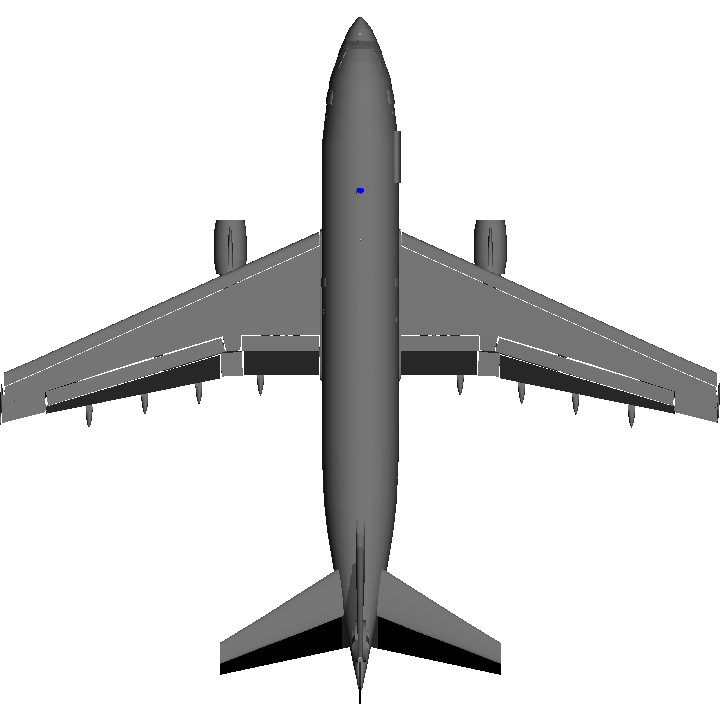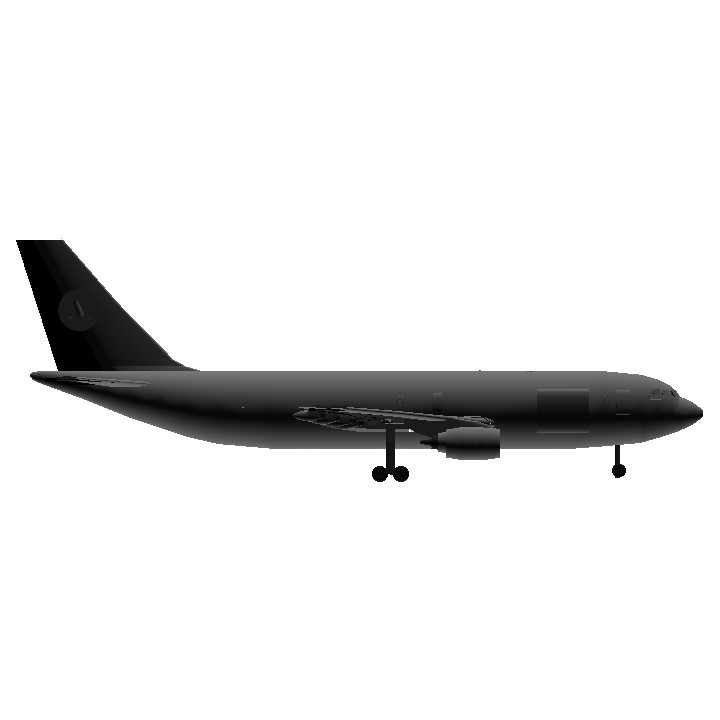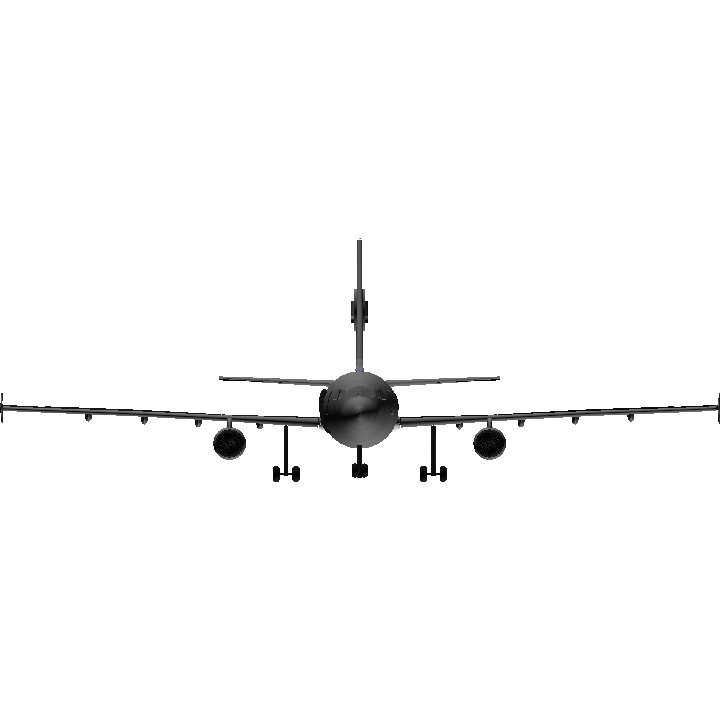Original plane: here
Wikipedia about a310:
The Airbus A310 is a wide-body aircraft; designed and manufactured by Airbus Industrie, then a consortium of European aerospace manufacturers. Airbus had demand for an aircraft smaller than the A300, the first twin-jet wide-body. On 7 July 1978, the A310 (initially the A300B10) was launched with orders from Swissair and Lufthansa. On 3 April 1982, the first prototype conducted its maiden flight, and it received its type certification on 11 March 1983.
Keeping the same eight-abreast cross-section, the A310 is 6.95 m (22.8 ft) shorter than the initial A300 variants, and has a smaller wing, down from 260 to 219 m2 (2,800 to 2,360 sq ft). The A310 introduced a two-crew glass cockpit, later adopted for the A300-600 with a common type rating. It was powered by the same General Electric CF6-80 or Pratt & Whitney JT9D then PW4000 turbofan jet engines. It can seat 220 passengers in two classes, or 240 in all-economy, and has a flying range up to 5,150 nmi (9,540 km). It has overwing exits between the two main front and rear door pairs.
In April 1983, the aircraft entered revenue service with Swissair, and competed with the Boeing 767-200, introduced six months before. Its longer range and ETOPS regulations allowed it to be operated on transatlantic flights. Until the last delivery in June 1998, 255 aircraft were produced, as it was succeeded by the larger Airbus A330-200. It was available as a cargo aircraft version, and was also developed into a military variant, the A310 MRTT multi-role transport, then tanker.
Specifications
General Characteristics
- Created On Android
- Wingspan 125.6ft (38.3m)
- Length 119.8ft (36.5m)
- Height 42.5ft (13.0m)
- Empty Weight N/A
- Loaded Weight 80,738lbs (36,622kg)
Performance
- Power/Weight Ratio 3.34
- Wing Loading 44.0lbs/ft2 (214.8kg/m2)
- Wing Area 1,835.3ft2 (170.5m2)
- Drag Points 43148
Parts
- Number of Parts 252
- Control Surfaces 5
- Performance Cost 1,241

